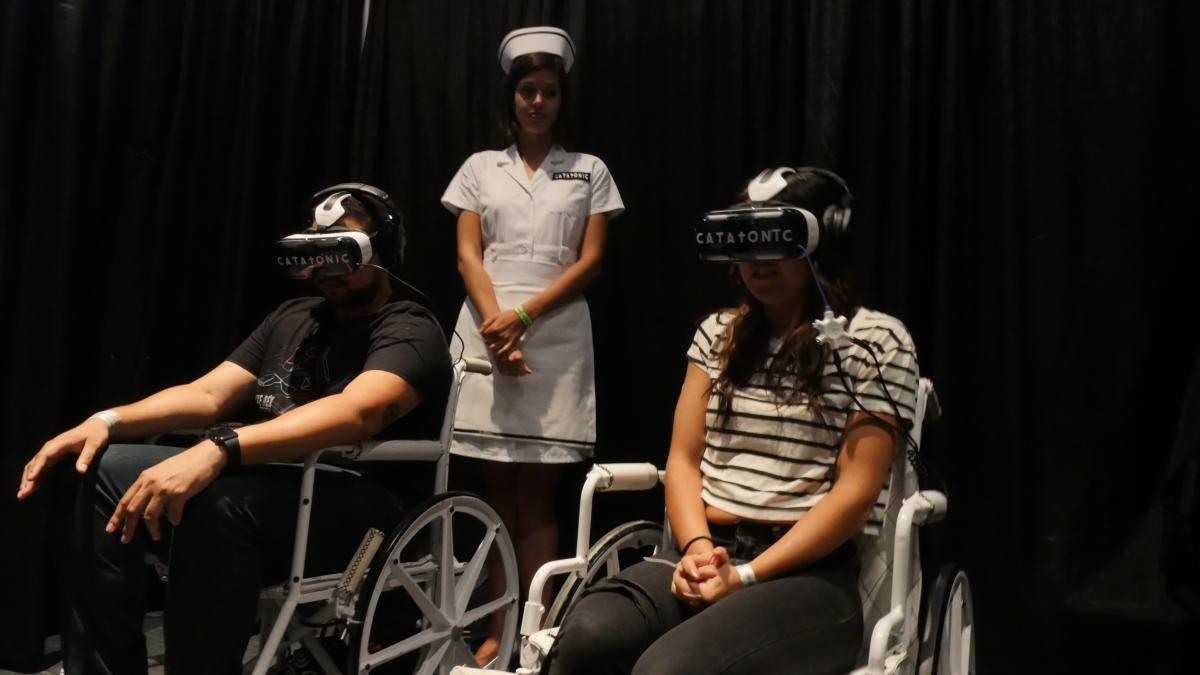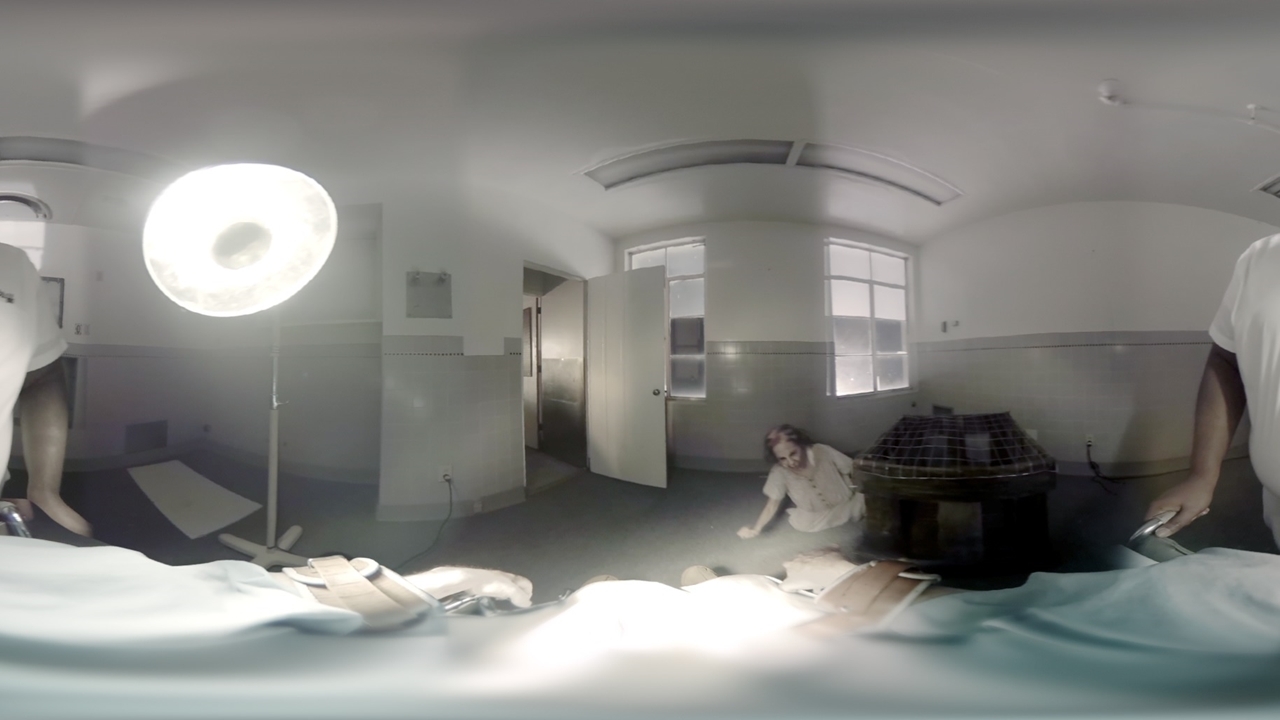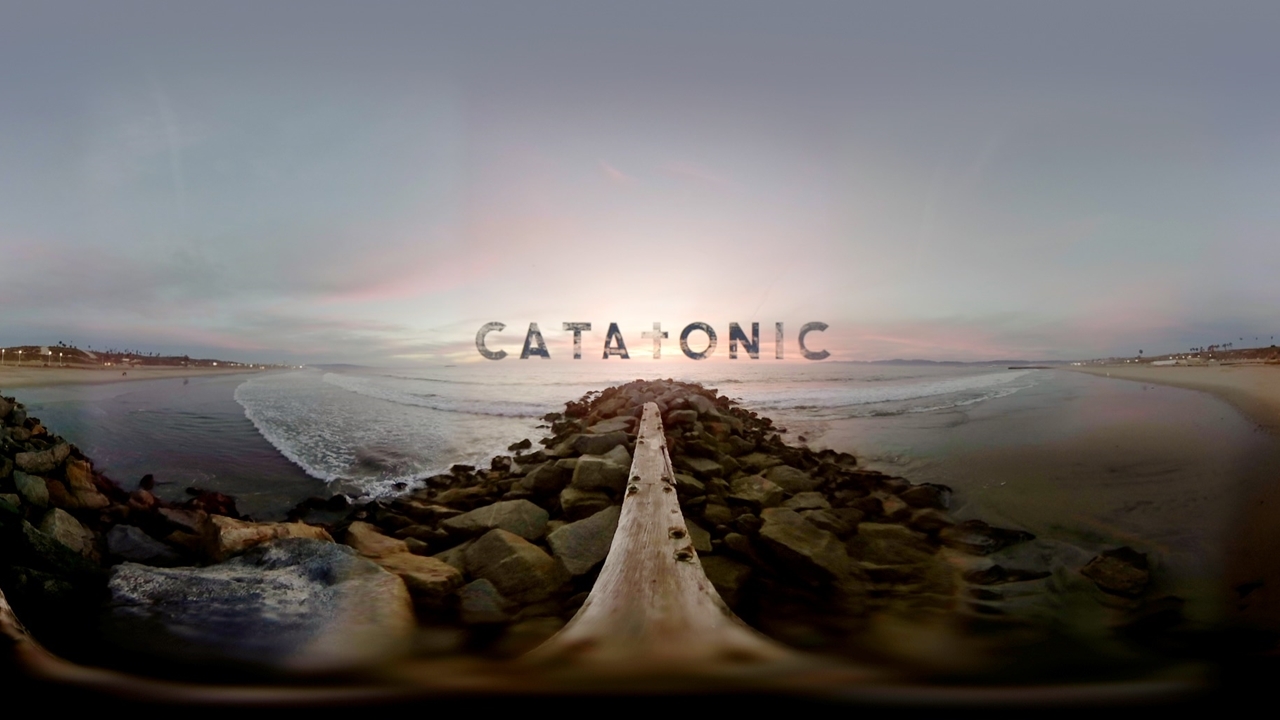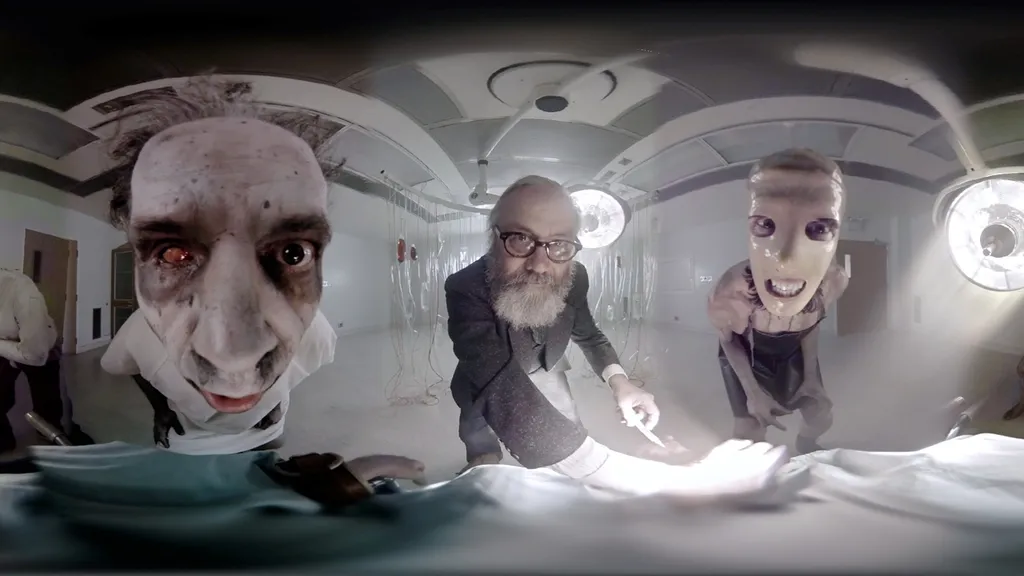Trapped in an elevator, my mind begins to race as I wake up sitting in a wheelcair. A man behind informs me that in a few moments I’ll be in my new home. What home? I don’t remember any of this. Where am? Who am I? Why am I here? Then, a voice echos in my head. It says, “Another institution might not have known what to do with you, but we do. We’re going to put you in our special wing. You’re going to make a lot of friends.” A door opens, the lights flicker, and the insanity begins.
At this point, the experience goes off the rails. Physically, my body sits in an actual wheelchair during the 2015 Summer Expo by VRLA; but my brain leads me to believe that I’m in a decrepit insane asylum somewhere else. I feel vibrations radiating from below the seat as a nurse rolls me through a psychiatric ward filled with people on the brink of madness.

This VR particular demonstration called Catatonic was created by VRSE, a production company that supports the world’s leading creative innovators in Virtual Reality spherical filmmaking. It has been scaring people for months now, first debutting at SXSW earlier this year. Articles and reaction videos started pouring out from practically every event where Catatonic was shown. This obviously peaked my interest, so I was excited to give it a go at VRLA.
Overall, it is scary. There are moments in the film that tap into a deep down feeling of fear, something that we all have. No one wants to loose their mind; especially to the point of no return. That idea of being forced into a insane asylum with a bunch of other crazy individuals screaming and lunging around can be petrifying.

With that said, there are a few areas where this experiences lacks. To start, the ButtKicker™” that jostles the wheelchair during the narrative seemed out of place. Don’t get me wrong, adding haptics to a virtual reality system can surely increase the levels of immersion felt during demos when properly utilized. However, in Catatonic’s case, the vibrations kept drawing me out of the experience because it didn’t feel like the rumbling was synced to anything. Rather, it just shook the chair continuously. Perhaps it was tied to the audio, but it would have been more impressive if the chair rumbled according to the bumps on the ground.
Another thing that threw me off was the many stitching errors seen throughout the experience. This was most likely due to the difficulty involved in creating perfect seams while recording in 3D. Having additional footage for that sense of depth makes it rougher to stitch together. Not to mention the challenges involved in correcting these issues while moving the camera around. So, it is understandable why the errors were there. Still, the stitching problems were fairly noticeable.

What Catatonic does well though, like I said above, is that it taps into that internal fear of the person. “As the story goes along the route becomes more and more disturbing,” Director Guy Shelmerdine told Wired magazine in March. “There are some supernatural things that happen and then you end up basically being medicated to death and actually find peace.”
VRSE tells stories in virtual reality like no other company out there. They push the boundaries in every single way. They are brave. They are willing to tell live action narratives that few will venture into. Catatonic’s ride through an insane asylum is exhilerating and does just that.
The characters placed into the demo are freaky, chaotic, and often traumatic. Sections of the experience are wildly creative. For example, there is a portion of the film where the user is lunged forward into a staircase. Then, a person with a mask runs up and pushes the wheelchair frantically down the steps. Darkness sets in, followed by a zombie-like man breaking a window as glass shards head right towards the user almost poking them in the eyes.
VR Infects the Scare LA Conference for a Frightful Weekend
It’s moments like that that show how much potential the medium of virtual reality has; especially for those looking to tell stories with it. VRSE depcits what can be done with the genre of horror, which is a given for VR. It is so easy to scare people with it, and this usually makes for great reactions.
Yet, I’ll ask this questions again: “Is this really what VR needs?” Like I mentioned in a recent article about the Insidious VR Experience, for now, the answer is “yes.” More people need to try out the medium so that they can go home and tell their friends how awesome it is. Demonstrations like Catatonic and other horror-related films help spread the movement even further. However, at the same time, the novelty of experiences like this will eventually wear off.
Still, VRSE should be commended for what they have accomplished here. Just look at the video below of all the reactions they are getting from this demo. They have truly stumbled upon something powerful here. In addition to Catatonic, VRSE is also inducing empathy through their virtual reality journalism as well. With experiences like Catatonic, Clouds over Sidra, and Waves of Grace, VRSE is producing powerful emotional connections through the use of VR. Few come close to what they can do.
Now, we just have to wait to see what they do next.
https://www.youtube.com/watch?v=kygnmk899bE
Those interested in Catatonic can download it through VRSE’s MilkVR app on GearVR.


























